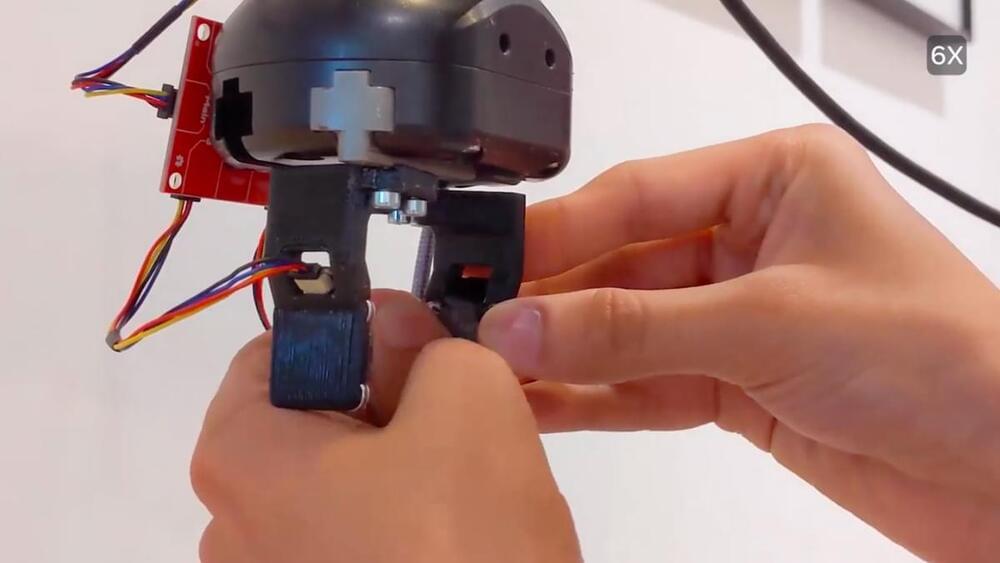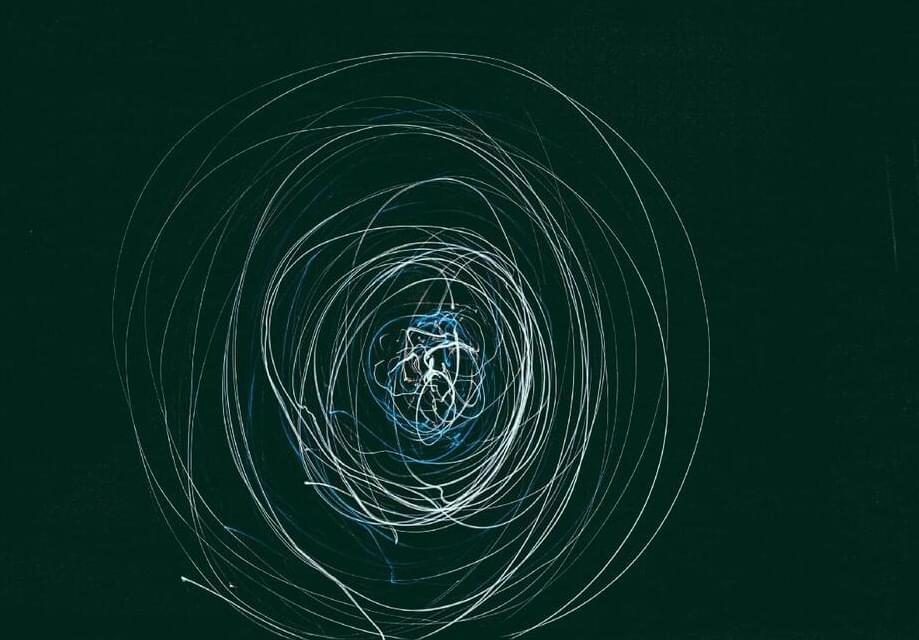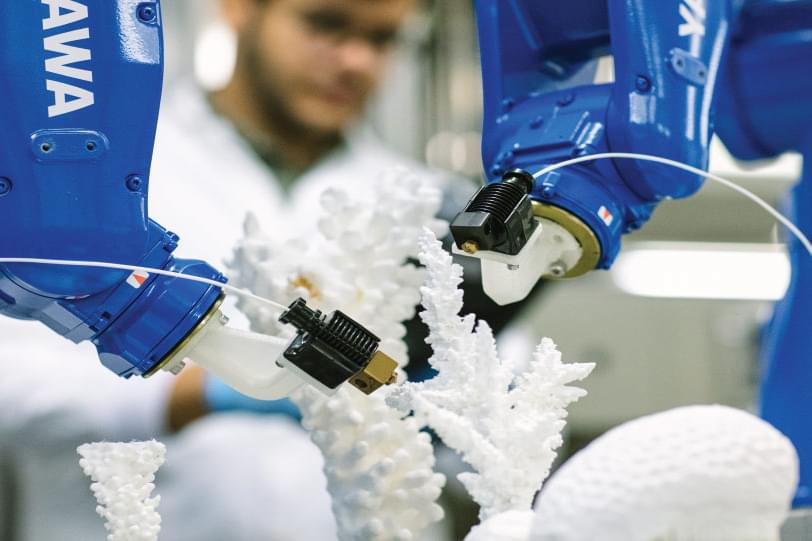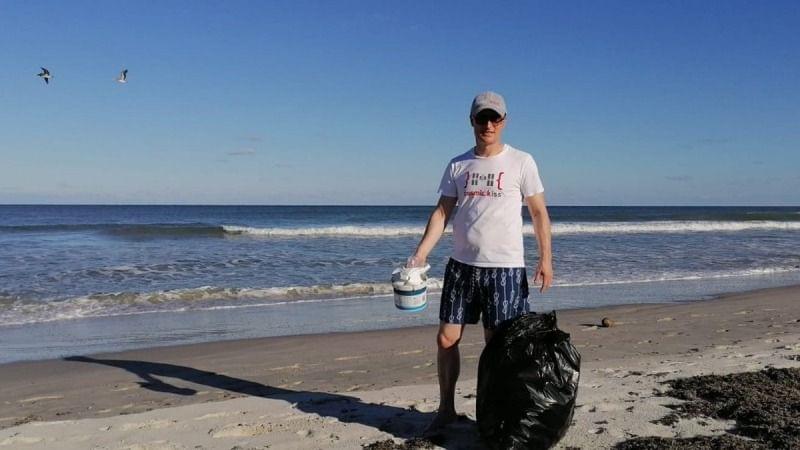Meta’s new tactile-sensing skin could allow robots to “feel” in a new way, which will somehow make the metaverse more life-like.


Sabine Hossenfelder, Anil Seth, Massimo Pigliucci & Anders Sandberg discuss whether humanity is stuck in the matrix.
If you enjoy this video check out more content on the mind, reality and reason from the world’s biggest speakers at https://iai.tv/debates-and-talks?channel=philosophy%3Amind-a…the-matrix.
00:00 Introduction.
02:21 Anders Sandberg | We could be living in a superior race’s simulation.
04:16 Sabine Hossenfelder | The simulation hypothesis is pseudoscience.
06:20 Anil Seth | Is whether we are a simulation even important?
09:29 Massimo Pigliucci | The mind is too complex to be replicated.
13:14 Is it reasonable to question the existence of reality?
23:55 How do we define reality?
29:34 Are we victim to Hollywood fantasy?
Are we living in a computer simulated reality? Until recently the possibility that we are living in a computer simulation was largely limited to fans of The Matrix with an over active imagination or sci-fi fantasists. But now some are arguing that strange quirks of our universe, like the indeterminateness of quantum theory and the black hole information paradox are evidence that our reality is in actuality a created simulation. Moreover, tech guru Elon Musk has come out supporting the theory, arguing that ““we are most likely in a simulation””.
Should we take the idea that we are living in a computer simulation seriously? Groundbreaking consciousness researcher Anil Seth, stoic philosopher Massimo Pigliucci, maverick physicist and Youtube sensation Sabine Hossenfelder and Oxford transhumanist Anders Sandberg ask if we are stuck in the matrix. The debate is hosted by Güneş Taylor.
#AnilSeth #MassimoPigliucci #ComputerSimulatedReality.

Thanks to this new category of algorithms that has proved its power of mimicking human skills just by learning through examples. Deep learning is a technology representing the next era of machine learning. Algorithms used in machine learning are created by programmers and they hold the responsibility for learning through data. Decisions are made based on such data.
Some of the AI experts say, t here will a shift in AI trends. For instance, the late 1990s and early 2000s saw the rise of machine learning. Neural networks gained its popularity in the early 2010s, and growth in reinforcement came into light recently.
Well, these are just a couple of caveats we’re experienced throughout the past years.

Living coral reefs consist of rigid porous “skeletons” inhabited by the tiny coral polyps that built them. A new research project aims to restore damaged reefs faster than ever, utilizing 3D-printed skeletons made of the same material as the real thing.
First of all, there have been other projects that attempted to encourage the regrowth of coral by placing artificial skeletons on existing reefs. In most cases, though, those skeletons were made of materials such as concrete or polymers.
This means that waterborne coral polyps arriving at the reef have had to secrete calcium carbonate onto the structures, in order to “make them their own.” Given that some corals grow at a rate of just a few millimeters per year, it can take quite a long time to rebuild reefs in this fashion.

Australian researchers have developed disruptive technology allowing autonomous vehicles to track running pedestrians hidden behind buildings, and cyclists obscured by larger cars, trucks, and buses.
The autonomous vehicle uses game changing technology that allows it to “see” the world around it, including using X-ray style vision that penetrates through to pedestrians in blind spots and to detect cyclists obscured by fast-moving vehicles.
The iMOVE Cooperative Research Centre-funded project collaborating with the University of Sydney’s Australian Centre for Field Robotics and Australian connected vehicle solutions company Cohda Wireless has just released its new findings in a final report following three years of research and development.
The big question that may be on many viewers’ minds is whether the robots are truly navigating the course on their own—making real-time decisions about how high to jump or how far to extend a foot—or if they’re pre-programmed to execute each motion according to a detailed map of the course.
As engineers explain in a second new video and accompanying blog post, it’s a combination of both.
Atlas is equipped with RGB cameras and depth sensors to give it “vision,” providing input to its control system, which is run on three computers. In the dance video linked above and previous videos of Atlas doing parkour, the robot wasn’t sensing its environment and adapting its movements accordingly (though it did make in-the-moment adjustments to keep its balance).
Fighting The Battle Against Biological Aging — Dr. Eric Verdin MD, President & CEO, Buck Institute for Research on Aging.
Dr. Eric Verdin, MD (https://www.buckinstitute.org/lab/verdin-lab/) is President and Chief Executive Officer of the Buck Institute for Research on Aging, as well as Professor of Medicine at University of California, San Francisco (https://bms.ucsf.edu/people/eric-verdin-md).
Dr. Verdin’s lab currently studies the relationship between aging and the immune system per associated defects in the adaptive immune system, and over chronic activation of the innate immune system, as well as programs on how metabolism, diet, and small molecules regulate the activity of histone deacetylases and sirtuins, and thereby the aging process and its associated diseases, including Alzheimer’s.
Dr. Verdin has published more than 200 scientific papers and holds more than 15 patents. He is a highly cited scientist (top 1 percent) and has been recognized for his research with a Glenn Award for Research in Biological Mechanisms of Aging and a senior scholarship from the Ellison Medical Foundation.
Dr. Verdin is an elected member of several scientific organizations, including the American Association for the Advancement of Science, the American Society for Clinical Investigation, and the Association of American Physicians. He also serves on the advisory council of National Institute on Drug Abuse at the National Institutes of Health.
One and a half minutes. That’s how long the clip showing the Starbase facility in Texas, posted by SpaceX on Monday, is, but more than enough time for most of us to get a glimpse of how the not-so-distant future might look like.

‘Clean oceans, clean space,’ is what was in Matthias Maurer’s mind while filling bags on the beach.
A German astronaut is showing his love for Earth during a few extra days on the planet’s surface before his first space mission.
Matthias Maurer, who is waiting with the rest of Crew-3 team for a delayed ride to the International Space Station, has spent part of his quarantine picking up trash on the Florida beach, within range of his SpaceX launch site at NASA’s Kennedy Space Center in Cape Canaveral. The mission, which will launch four astronauts to the station on a SpaceX Crew Dragon and Falcon 9 rocket, will launch no earlier than Saturday (Nov. 6).